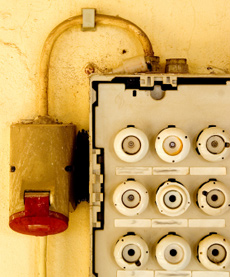Make do and mend?
 In the current economic climate, you might decide to repair some of the facilities in your premises, for example your electrical system, rather than replace them. Rules in the Finance Act 2008, which became effective from 1 April 2008 for companies and 6 April 2008 for sole traders and partnerships, could restrict what costs you can deduct and when.
In the current economic climate, you might decide to repair some of the facilities in your premises, for example your electrical system, rather than replace them. Rules in the Finance Act 2008, which became effective from 1 April 2008 for companies and 6 April 2008 for sole traders and partnerships, could restrict what costs you can deduct and when.
For specified equipment that forms an integral feature of a building, last year’s reform of capital allowances introduced a new 10% annual rate of writing-down allowance.
Integral features include electrical and lighting systems, water, heating and air conditioning (as well as any repairs to floors and ceilings damaged in the process). Also included are lifts, escalators and external solar shading. A building’s thermal insulation is included, except where the building is used as a residence.
But what happens if you decide to repair such equipment instead of replacing it? Generally, if you repair your plant and machinery, rather than replace it, you can deduct the full cost of the repair when calculating your taxable profits in the year the expenditure is incurred. However, when integral features are repaired, the new legislation may restrict the deduction.
The problem is that if, in any 12-month period, the total cost of repairing an integral feature is more than 50% of the cost of replacing it in full, the expenditure will qualify for capital allowances at the rate of only 10% a year. So if you intend to carry out repairs (for example, to a lighting system), you will need to obtain an estimate from a qualified third party of the cost of full replacement, and keep a running total of your current and future repair costs in a 12-month period to test against 50% of that estimate.
Although HM Revenue & Customs has issued further guidance, there are several unanswered questions. For example, the guidance does not explain what will happen to expenditure that is initially below the 50% limit, but later exceeds it due to poor workmanship requiring remedial repairs, or whether expenditure can be reduced by insurance proceeds, so that only the net expenditure incurred is considered for the 50% test.
This is a complex area, so let us know if you are planning to repair or replace assets. When reviewing the tax treatment of repairs, we will also take other allowances into account, such as the annual investment allowance and the 100% allowance for energy-saving equipment. Why wait longer than you have to for a tax deduction on your expenditure?